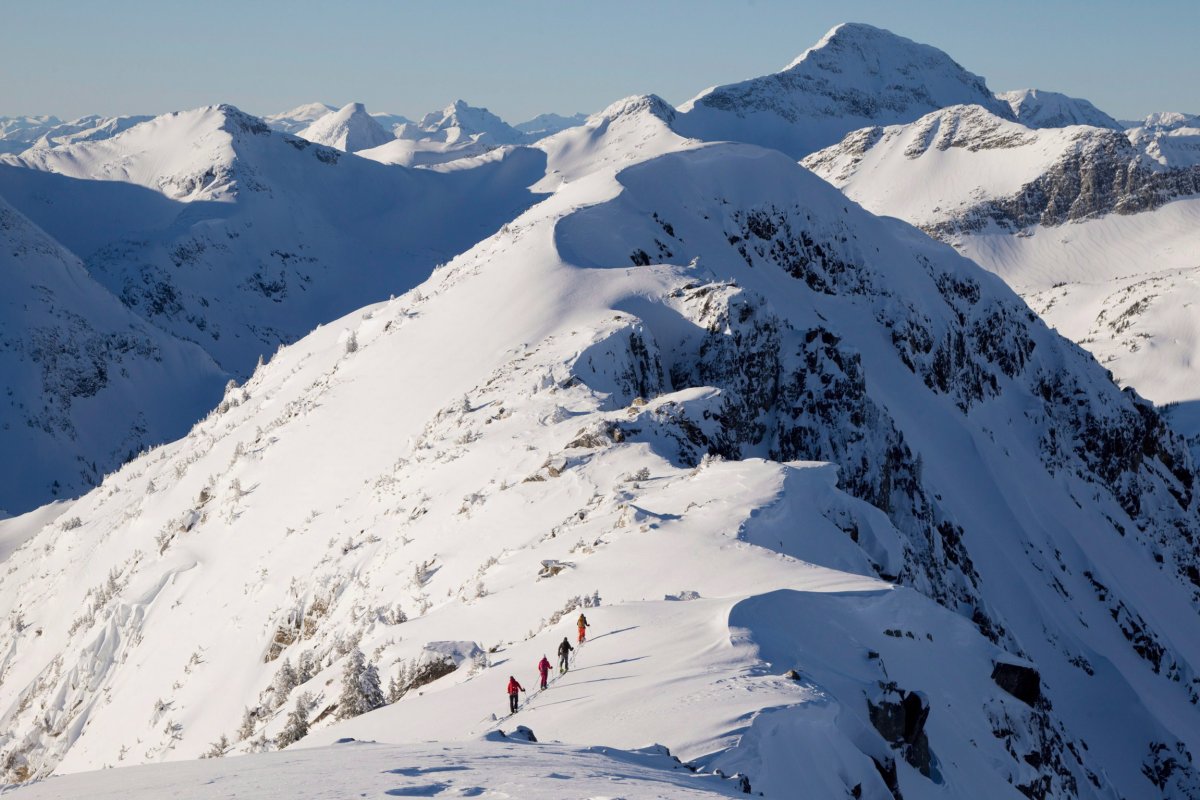Twenty years after he survived being buried in a deadly avalanche in British Columbia’s backcountry, Ken Wylie is urging people to be cautious and aware while dealing with a similarly unstable snowpack this year.

“Just accept this is a challenging season and make plans around that,” he said from his Mill Bay home on Vancouver Island.
“And stick to the plans that you make around that. Don’t let those plans erode as you kind of tickle the snowpack to ever-increasing steepness.”
Wylie was one of 13 caught in the avalanche in January 2003 north of Revelstoke, B.C. Seven people died.
Experts have compared this year’s snowpack, with a weak layer of sugar-like crystals buried near the bottom, to that of 2003, when avalanches in Western Canada killed 29 people, most of them in B.C.
Five people have died in three B.C. avalanches so far this January.
Avalanche Canada, a forecasting, training and safety agency, says the layers are deep enough that people are less likely to see clues of instability but there remains a serious potential for large, human-triggered avalanches.
Wylie, who was an apprentice guide in 2003, said he shoulders some responsibility for what happened during that trip, including by not listening to a group member who he said was uncomfortable with the situation prior to the avalanche.

Here is a timeline of avalanche events this season:
- Dec. 31: A skier suffers life-threatening injuries in a slide near Emerald Lake in southeast B.C., near the Alberta border.
- Jan. 5: Avalanche Canada warns of a touchy snowpack, with various weak layers created by long periods of drought and cold weather. “Riders have triggered large, scary avalanches with high consequences,” the advisory says.
- Jan. 9: Two off-duty police officers are caught up in an avalanche near Kaslo, B.C., while backcountry skiing. Nelson Police Service Const. Wade Tittemore, 43, dies and Const. Mathieu Nolet, 28, sustains severe internal injuries.
- Jan. 21: Nolet dies of his injuries in hospital.
- Jan. 21: Two snowmobilers riding at the base of a slope near Valemount, B.C., accidentally trigger an avalanche from above, sending a slab of snow onto one rider while the other escapes. The buried rider is found unresponsive and dies.
- Jan. 23: Heli-skiers and their guide are caught in an avalanche near Revelstoke, B.C. The two guests are dug out of the snow unresponsive and are both declared dead in hospital. The guide is taken to hospital in stable condition.
- Jan. 23: A slide comes down on one person near Cherryville, B.C. Emergency health services say the person is taken to hospital with undetermined injuries.
- Jan. 24: Brothers and American businessmen Jonathan and Timothy Kingsley are identified by Pennsylvania-based Kinsley Construction as the victims of the slide near Revelstoke on Jan. 23.

“That accountability has brought healing, right? I don’t have anything to defend or be upset about. I’m no longer the person I was that was making those decisions and choices,” he said.
“I had a maturing that was required and, unfortunately, it took tragedy to underpin that maturing.”
Wylie now offers training in risk management to help others see risks, speak up in challenging situations and make better choices.
He said people in the backcountry need to speak up if they see others in their group taking risks.
“I think that we individually, we don’t want to be the killjoy,” he said.
“But we’re in a position as a member of a group where we’re exposed to consequence, and I think it’s easy to forget that.”

Still, he worries that the longer B.C.’s snowpack stays the way it is, the harder it is going to be for people to make those safer choices.
“We’re fundamentally impatient and we live in a society that we’re constantly used to gratifying our desires instantly,” he said.
“So, yeah, my opinion is that the longer this goes on, the harder it is going to be for people to make conservative choices.”
Pascal Haegeli, an avalanche safety researcher at Simon Fraser University in Burnaby, B.C., said he expects the weakness in the snowpack to be around for the rest of the season.

Because of how deeply buried the weak layer is, it’s unlikely to see the kind of warmer temperatures required to help snow pack more closely together, he said.
Haegeli said the extreme weather that comes with climate change is making snowpack conditions less predictable, something those who use the backcountry will have to get accustomed to when planning trips.
“It makes it harder for people who go into the backcountry to rely on their past experience to make decisions,” he said.
Avalanche Canada is reminding anyone going out to the backcountry to always check the avalanche forecast, have the essential rescue gear and be trained on how to use it.

On Wednesday, the BC Coroners Service issued a small report on avalanche deaths in B.C. between 2011 and 2022.
It said there were 77 avalanche deaths in that timespan, equating to an average of seven deaths a year. The season with the most deaths was 2015-16, when 14 deaths were recorded.
Of those 77 deaths, 91 per cent were male, while those between 30 and 40 accounted for 65 per cent.
Further, most avalanche deaths happened in B.C.’s Interior (Southern Interior 53 per cent, Northern Interior, 30 per cent), and that snowmobiling had the most deaths at 51 per cent, followed by skiing (26 per cent) and heli-skiing (8 per cent).
— With files from Doyle Potenteau, Global News
- Posters promoting ‘Steal From Loblaws Day’ are circulating. How did we get here?
- Video shows Ontario police sharing Trudeau’s location with protester, investigation launched
- Canadian food banks are on the brink: ‘This is not a sustainable situation’
- Solar eclipse eye damage: More than 160 cases reported in Ontario, Quebec



Comments